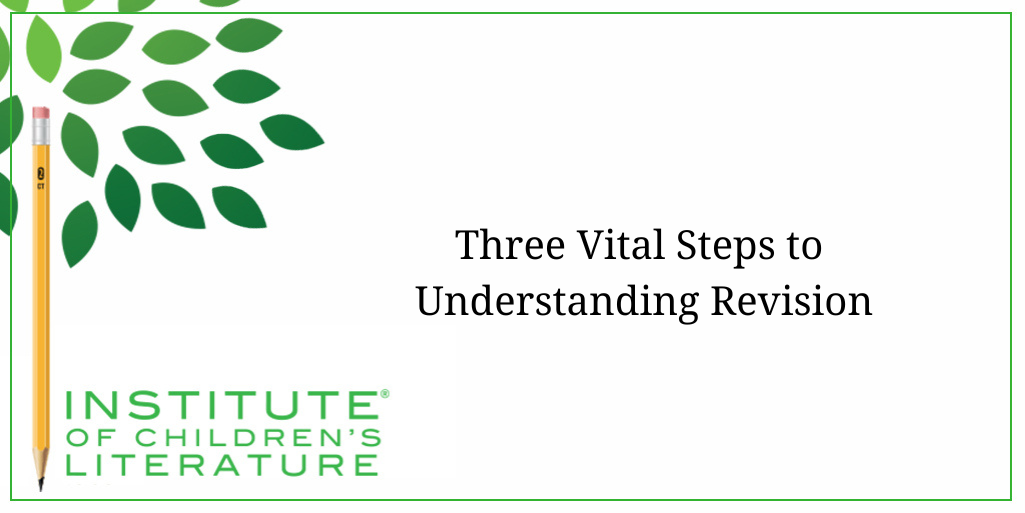
5 Ways Writers Can Prep for 2025 Goal Setting
Before we roll on to the new writing year, let’s harness our optimism for the blank slate before us and prepare for our 2025 Goal Setting just for writers.

To do the hard work of revision, to commit to it, and see it through to the end, you need to understand what revision is meant to do. Many writers believe revision is simply about fixing errors. It’s not. Although error fixing is important, it’s only a tiny part of the job of revision.
The job is much bigger, and it involves changes that make your writing more effective. Effective writing engages and evokes a response in the reader. Ineffective writing bores, confuses, distracts, and convinces the reader there are better ways to spend his time. Because of that, revision is not simply important, it’s essential.
Readers can be tricky and elusive. To catch their interest and hold them through to the end of a story, book, or article requires both the inclusion of positive things and careful exclusion of the negatives. For instance, you want to include things that entice and engage readers, but you want to cut out any elements that might kick the reader out of the “reading dream,” the state of being caught up in the work you’ve created.

An engaging voice begins with the first draft. It is during this initial writing that the language and tone fall into the pattern that makes up voice. But to be all that it can be, voice will always require revision.
As we grow weary in the writing of a book, we’ll often overuse words, or choose the first thing that comes to mind instead of weighing our words for the more perfect choice for each sentence. Because of a tendency to fall into lazy writing when we get weary (which happens to most of us somewhere around the midpoint of a project), revision will always require recapturing that voice that we found early on and keeping it constant through to the end. Keeping the voice will help you keep the reader.
Pace is another thing revision is meant to help you improve. Readers today tend to have a great many things vying for their attention. As a result, it’s difficult for a book to hold onto the reader if the pace drags. That kind of drag allows thoughts of all the other things the reader might be doing to creep in. If the pace drags long enough, your reader will go ahead and go do those things.

Sometimes you will choose to slow the pace to give the reader a rest spot, but intentionally slowing the page and allowing the pace to drag are two different things. Pace can drag when you begin to lose your voice, but it also drags if you allow too much exposition (information dumping) to creep in and if you take side trips that wander away from the plot. Plot, by definition, moves, so when you wander away from your plot, you will lose pace.
Another thing that can make pace drag (or at least stumble) is jumbling up the timeline. Pulling things out of the flow of time and offering them as flashbacks runs the risk of killing your pace. Keeping the flashbacks quick and filled with action will help, but the best way to avoid the drag is to use only those flashbacks you truly need.
Certain things kick a reader right out of a manuscript. Some of these include grammatical errors (yes, they matter and readers do notice. Don’t let people convince you they don’t), continuity errors (If your main character is sometimes named Allan, and sometimes Alan, and sometimes Allen, your reader will notice and it’ll pull him out of the story).

Confused readers tend to stop reading. Some will stay with you for a while, but if you don’t help them understand what’s going on soon, they will grow frustrated and stop reading.
Bored readers will leave you as well, but we’ve already covered the biggest causes of bored readers: poor pacing and dull voice.
To avoid these kinds of losses, keep your writing clear, direct, and (whenever possible) choose positive sentence forms over negative. Positive sentence forms are easier to read and understand and tend to have better flow.
Positive: Revision lets you make the best choices in every sentence.
Negative: Revision won’t let you leave weak writing choices in the bulk of your sentences.
Negative: Don’t meander when you can go straight.
Positive: Avoid wandering and go straight.
When you work through your revisions, avoid thinking of it as mistake correction. It’s much more than that. Revision is improvement. It’s polishing your writing throughout so that it’s at the same level as the best moments in it. You’re not knocking off the rough edges, you’re raising everything to the same level of excellence, excitement, and skill. The end result is the best possible work you can create and that’s what your readers are looking for.
With over 100 books in publication, Jan Fields writes both chapter books for children and mystery novels for adults. She’s also known for a variety of experiences teaching writing, from one session SCBWI events to lengthier Highlights Foundation workshops to these blog posts for the Institute of Children’s Literature. As a former ICL instructor, Jan enjoys equipping writers for success in whatever way she can.

Before we roll on to the new writing year, let’s harness our optimism for the blank slate before us and prepare for our 2025 Goal Setting just for writers.

Writers can be thin-skinned when it comes to getting feedback on their work. Let’s look at 4 ways to positively deal with constructive criticism!

Rejection is part of the territory when it comes to being a writer. Today we offer reflection for writers to help redirect your efforts after a rejection.
1000 N. West Street #1200, Wilmington, DE 19801
© 2024 Direct Learning Systems, Inc. All rights reserved.
1000 N. West Street #1200, Wilmington, DE 19801
© 2024 Direct Learning Systems, Inc. All rights reserved.
1000 N. West Street #1200, Wilmington, DE 19801
© 2024 Direct Learning Systems, Inc. All rights reserved.
1000 N. West Street #1200, Wilmington, DE 19801
© 2025 Direct Learning Systems, Inc. All rights reserved.
1000 N. West Street #1200, Wilmington, DE 19801
©2025 Direct Learning Systems, Inc. All rights reserved. Privacy Policy.
5 Comments
Thank you for the clear concise explanation of how vital revision is. I never heard of the positive verses negative sentence forms. Wow! This is an eye opener for me. I love it. Positive ways in life flow into our writing. When I review my work, I will look for negatives so I can reword them!
Thanks again, Carrie Hetzel
Good post.
Your tips for writers are always insightful and well-written. I learn something new every time I read an article from you. Thank you for always being clear and concise. It truly does keep a reader engaged. 🙂